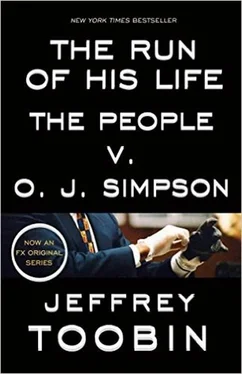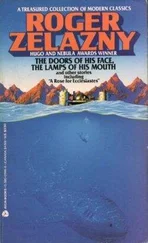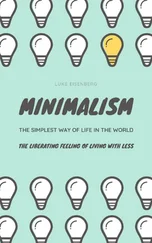Cochran followed Simpson’s relatives with a number of people who saw O.J. in the days before the murders: a fellow guest at a fund-raising dinner on June 11, an interior decorator who met with him on June 6, and a man who played golf with Simpson on June 8, at a Hertz event in Virginia. All of them testified that Simpson had behaved appropriately, in a friendly and cordial manner. One can scarcely imagine less provocative (or relevant) testimony. So Simpson was nice to these people-so what? But with them, again, Clark’s frustration surfaced. She went after these witnesses as if they were gangsters. Clark snarled at the golfer, Jack McKay, the mousy chief financial officer of the American Psychological Association: “After the two hours you spent with him, you don’t know what he looked like, do you?” McKay said he didn’t.
“You did not see him on June the ninth, 1994, correct?”
“Correct.”
“The tenth?”
“No.”
“The eleventh?”
“No.”
“The twelfth?”
“No,” the plainly terrified McKay conceded. Clark’s hostility had, perversely, elevated the importance of a witness she should have dispatched with just a question or two. And with the hapless McKay, Clark was just sharpening her knives for the rest of the defense witnesses.
Moving through witnesses quickly-twelve in two days-Cochran turned next to Ellen Aaronson and Danny Mandel. On the night of the murders, this young couple had gone out on their first (and only) date, dinner at Mezzaluna. Aaronson lived near Nicole’s condominium, and after their meal, she and Mandel strolled right by the murder scene. The key issue in their testimony was the time they passed Nicole’s front door.
It would be difficult to imagine two more upstanding witnesses. Aaronson produced videos for children, and Mandel had a job in finance at Sony Pictures. They were educated and articulate; neither had an axe to grind or a lust for publicity; they had behaved responsibly since the night of the murders, calling the police immediately to report what they remembered. The computer receipt of their restaurant bill showed that it had been printed at 9:55 P.M. They had chatted for a while after Mandel paid the bill, and estimated that they left the restaurant at about 10:15. This would mean that, in Aaronson’s words, they passed by Nicole’s residence at “a little after 10:25.” In their testimony, both Mandel and Aaronson remembered nothing out of the ordinary on Bundy Drive-no barking dogs and certainly no dead bodies.
For Marcia Clark, this was a problem. In her opening statement and through the testimony of Pablo Fenjves, Clark had committed herself to the murders having taken place at 10:15, the time that Fenjves asserted he heard the “plaintive wail” of the dog. But if the couple on the date saw or heard nothing at 10:25, what of Clark’s theory? That was why the defense wanted Mandel and Aaronson on the stand.
In fact, Clark had several options for dealing with their testimony. Fenjves lived behind Nicole’s house, while the couple had walked in front of it. Perhaps, Clark could have suggested, they simply didn’t hear the same sounds. Likewise, perhaps they were simply a little off in their time estimates. Or-most likely of all-Fenjves may have been slightly mistaken and the murders did not take place-and Kato-the-Akita did not start barking-until around 10:30. That still would have given Simpson plenty of time to make the five-minute drive to his own house and appear in front of Allan Park, the limousine driver, at 10:55. All in all, then, Aaronson and Mandel’s testimony was in no sense exculpatory for Simpson. Clark should have had no trouble integrating their version of events into the general prosecution outline of how the murders took place.
But Clark took a different approach to the couple’s testimony. The prosecutor’s explanation for Aaronson and Mandel’s account? They were liars-and drunken liars to boot.
“I just have to ask you one question,” Clark began her frosty cross-examination of Aaronson. “That credit card receipt in the amount of $47.50… You guys didn’t have anything to drink?”
“No,” said Aaronson.
“You just had dinner?”
“No alcohol,” the witness replied firmly-just as Mandel had said.
“Did that seem like a large amount to pay for just two dinners and a cappuccino?”
Cochran objected to this digression, but Clark kept pursuing Aaronson, forcing her to account precisely for what they ate and how it could possibly have added up to forty-seven dollars. In fact, if Clark had called Mezzaluna-or any of the other overpriced boîtes that dot Brentwood-she would have learned that it was easy to spend fifty dollars on practically no food at all. But Clark didn’t. Instead, she just accused Aaronson of conducting a boozy debauch in preparation for her walk home. Practically spitting her words at Aaronson, Clark demanded to know how many people were in the restaurant, exactly the route she had walked, everyone she had talked to about the incident, when she had first called the police, even what Aaronson had been wearing.
“And you are not sitting here trying to tell us there was no body lying at the foot of the steps at 875 South Bundy?” Clark growled.
Ito asked her to rephrase the question.
“Ms. Aaronson,” Clark said with no less hostility, “are you telling the jury that there was no one lying at the foot of the steps at 875 South Bundy when you passed by?”
“I have no idea,” said Aaronson, who at this point was looking at Clark as if the prosecutor were insane.
Three more women from the neighborhood testified that the scene near Bundy was silent at 10:15, and one of them said that the dog didn’t start barking until about 10:35. Again, it was all consistent with Simpson’s guilt-but not with the prosecution’s theory of the case.

The fact that Robert Heidstra lived up the block from Nicole demonstrated just how different Nicole’s new neighborhood was from her old one, where she lived when married to O.J. Heidstra earned his living in a distinctively Southern California occupation-he was a “car detailer.” Heidstra traveled to the homes of wealthy people and cleaned their automobiles in a particularly meticulous way. He used toothbrushes and Q-tips as the tools of his trade. He supplied, in other words, a kind of meta-car wash for this car-obsessed culture. (Among his clients were the Salingers, Simpson’s next door neighbors and the employers of Rosa Lopez.) It was not especially lucrative work, and Heidstra, a middle-aged immigrant from France, lived in a single room in a small apartment house off Bundy Drive.
Cochran called Heidstra to testify about what he had heard while walking his dogs on the night of the murders. On direct examination, he said that he was walking on an alleyway parallel to Bundy at about 10:40 P.M. on June 12, 1994. At that time, he said, he heard a commotion in the area of Nicole Brown Simpson’s condominium-two voices, one clear, saying, “Hey, hey, hey!” and the other indistinct. In this respect, Heidstra bolstered the defense theory that the murders took place around 10:30. (In a sobering reminder that this case involved actual human beings, Patti Goldman, Ron Goldman’s stepmother, told me at a break in Heidstra’s testimony that she could tell this witness was indeed describing Ron’s voice. “That’s just what Ron would say if he came on a scene like this,” Patti said. “ ‘Hey, hey , HEY!’ ”)
The defense’s “time line” witnesses had been identified and cultivated by Bailey, McKenna, and Peter Neufeld. Cochran, who rarely did much preparation of witnesses, had only a general idea of what Heidstra was going to say. The prosecution, in contrast, knew a good deal about Heidstra. He had been interviewed several times, and the prosecutors nearly decided to call him as a witness in their own case (dropping him only because he conflicted with Clark’s desire to place the murders at 10:15). But as Darden began his cross-examination, it became clear that Heidstra had a good deal to say that helped the government’s case. For starters, Heidstra admitted that he usually walked his dogs at 10:00, which, if he had done so on the night of the murders, would have put the killings at precisely the time the prosecution claimed. Heidstra also said that he saw a white vehicle that could have been a Bronco leaving the scene-another fact that was consistent with the government’s case. Twitching at the defense table, Cochran was losing his customary sang-froid as Darden converted Heidstra into a powerful prosecution witness. Continuing, Darden asked Heidstra, “The second voice that you heard sounded like the voice of a black man, is that correct?”
Читать дальше













